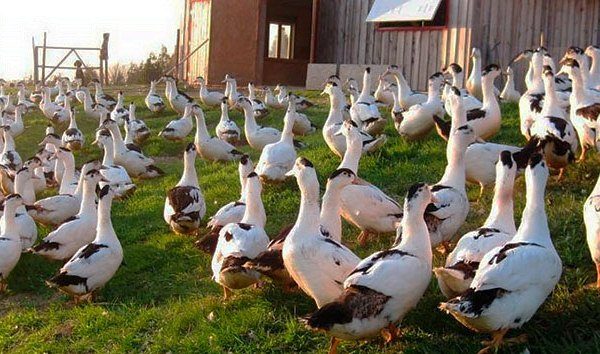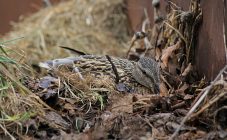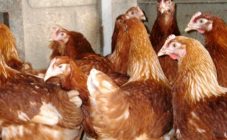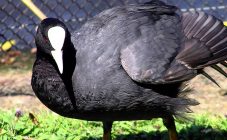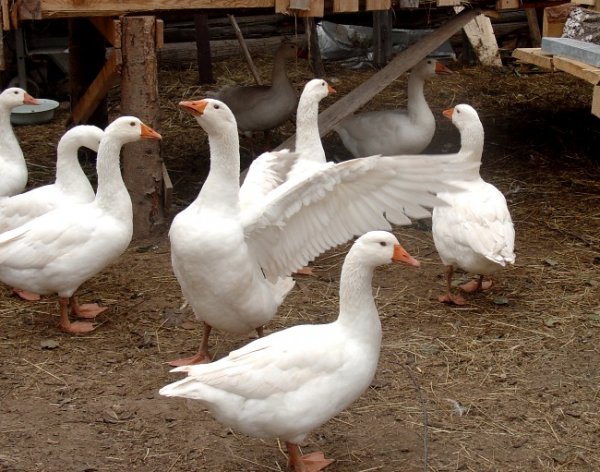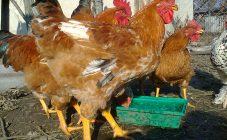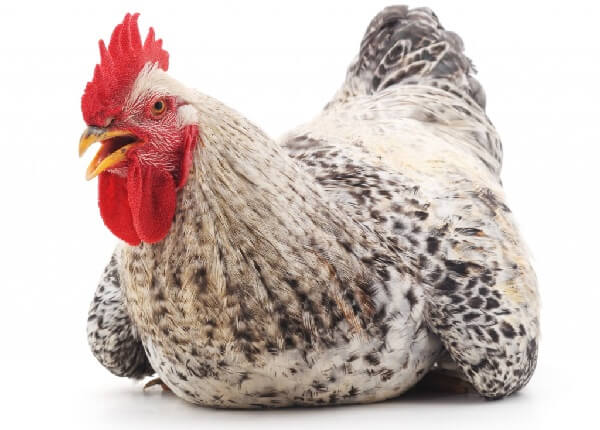Content:
Mulard is a hybrid obtained by selective crossing of high-yielding father breeds of the musk duck with mallards, most often with the Peking duck. Hence the name was formed - "MUscovy" from English means "musky" and malLARD - "mallard". Recently, the goose duck has enjoyed particular popularity. What is this outlandish bird and what is the reason for the growth of its livestock?
Duck Mulard: characteristics and description of the breed
The breed was bred in the 1960s in France thanks to the hard work of scientists who made every effort to get rid of the weaknesses of the original breeds and leave only the advantages. Naturally, in the wild, Mulard is not found, because the musk duck lives on the American continent, and the mallard - in Europe and Asia.
To care for this breed, you will not have to apply extra efforts (everything is according to the standard scheme), but the results will please. That is why it is on this breed that both amateur poultry farmers and large farmers engaged in poultry farming on an industrial scale stop their choice.
A feature of the cross is a black speck on the head of individuals, which gave them a reason to be called "mulattos". However, the color of the plumage of the offspring, and some other features, depend on the chosen parental pair. Also, crosses with white and dark color of the whole body are quite common.
Mulard can be distinguished from other breeds by a rather powerful body and strong wings, because crossing made it possible to obtain an individual that is significantly larger than its parents. Another feature is the relatively long neck, for which the representatives of the breed are often called "ducks - geese". The symbiosis of parental qualities made it possible to obtain a hardy, well-adapted to the new environment, resistant to diseases individual.
Ducks are a classic meat season with high productivity and early maturity, and this was the purpose of crossbreeding. With a properly selected diet and keeping conditions, poultry at 9-10 weeks can reach 3.5-4 kg, and the weight of an adult Mulard duck (4 months) can exceed 6 kg.
According to one of the poultry farms in the Moscow region, white Mulards of the CF15 cross at 12 weeks (84 days) have an average pre-slaughter live weight of 4.2 kg. Feed costs per 1 kg of live weight gain are 2.53 kg, while in the initial lines they are higher (musky - 2.75 kg, Beijing - 2.60 kg).
Mulard meat is very tasty, dark and tastes like beef. It is leaner than that of the Peking breed crosses, great for baking, smoking, preserving, and used for minced meat.
Another reason for the name "duck-goose" is the gradual replacement of geese by the Mulardami as the main source of foie gras. When using forced feeding, the mass of the liver after 24 packings is 500-600 g or more. Secondly, the poultry carcass is not a by-product, and is also in high demand. The average carcass weight is 2.5-3.5 kg. The weight of the sirloin is 760-810 g. Now the meat of this bird is at the peak of popularity in many European countries.In addition to dietary meat and valuable liver, each head can additionally obtain about 150 g of natural insulation for light industry.
Based on this, you can get mulatto ducks in the following ways:
- Purchase incubation Mulard eggs for setting in the incubator;
- Buy young animals or grown-ups;
- Purchase an Indo-Duck and 3-4 Peking Ducks or vice versa and cross them.
Breeding features
Raising ducklings is not at all difficult, because the care and feeding of Mulard ducks is quite similar to the maintenance of other breeds. They are calm, orderly and picky. In addition, the cross is characterized by high resistance to diseases and hardly needs vaccination. Ducklings adapt to different breeding technologies - from large-group industrial to organic. Variable approaches provide a pre-slaughter average Mulard weight at the level of 4.0-4.2 kg, but at different times (intensive - 84 days, semi-intensive - 120 days, extensive - 150 days). In any case, when choosing the degree of intensity of the technology, the cost of feed and their availability must be taken into account. For example, in the case when the farm has a large amount of cheap grain waste, the extensive method may be more expedient from the economic point of view.
The main secrets of the Mulard content include:
- strict temperature control,
- compliance with the light regime,
- proper organization of food.
The house should be protected from cold and precipitation, and the walking area should be spacious enough. Recommended enclosure rates - 1 m² per bird, room rates - 1 m² for two birds.
Most poultry breeders, having acquired a new breed, are wondering: what to feed the Mulard ducks in order to get the maximum possible weight. The first thing to remember is that you should not limit Mulard in food. After all, the breed is not inclined to accumulate body fat and a good appetite will only affect muscle mass.
Mulardy ducklings: feeding and keeping the first 3 weeks
On the first day, ducklings do not show much interest in food, because they still have nutrients in their bodies. On the second day, they are already more active, they begin to move independently, and accordingly, there is a need to replenish their strength. For this, it is best to use a finely chopped boiled egg mixed with millet porridge, or simply sprinkle with millet.
The ducklings need a drinking bowl on the first day, they will also have to be taught to drink. Chicks need to understand what water is and where to get it. To do this, you need to carefully dip the beak into the water, preferably several times.
On the third day, chopped greens and cottage cheese should be added to cereals and eggs. Weekly ducklings already need to mix compound feed, an abundance of which can be found in veterinary pharmacies. An alternative is to make your own compound feed by mixing 2 parts of chopped corn and 1 part of chopped wheat. To enrich the composition, use meat and bone or fish meal. This mixture should be given wet, not dry, and quite often - up to 6 times a day. The amount of feed should be small: exactly as much as the ducklings will eat at a time. You need to supplement the diet with greens in large quantities; the best option is grazing on the grass.
Two-week-old ducks are fed with the same compound feed, gradually increasing the size of the grinding of the components. You can also introduce boiled potatoes, beets, carrots. The ducklings are already quite adult and can be kept in a pen, but you still have to foresee a duck house for spending the night. If there is no swimming pond on the walk, then a large container of water is fine.
After 4 weeks, grated zucchini, wheat bran, and meat waste are already added to the compound feed. With a sufficient amount of grass, feeding can be done in the morning and in the evening, but if free range is not possible, then you need to feed the ducks 3 times a day. You should not try to replace compound feed with grass alone, because feeding with greens will not lead to a bird gaining the desired mass.
It is possible to slaughter livestock as early as 2 months, by which time the weight will be approximately 4 kg. If you plan to get more mass, you will have to wait another month.
Large farmers and amateur poultry farmers note the extremely profitable breeding of Mulard. Among the most pronounced advantages are:
- good growth rate and weight gain;
- high taste characteristics of meat;
- rather calm character, cleanliness;
- disease resistance;
- the possibility of obtaining foie gras.
The breed's advantages far outweigh the disadvantages. By and large, there is only one drawback - sterility. That is why today Mulard is an ideal option for growing on the "effort - result" scale.

